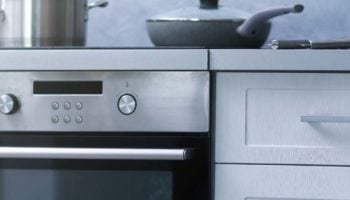Does your oven temperature keep changing, and you don’t know why?
You’re not alone! In fact, random oven temperature changes affect thousands of enthusiast bakers daily, leaving them confused and worried.
I know having your oven keep changing temperature can be very frustrating, especially if your oven comes from a good brand. But you can rest easy now; you’ve come to the right place for answers.
Below, you’ll find an article covering 10 simple fixes you can try to stop your oven from changing temperature constantly.
When your oven keeps changing temperature, it might be due to a broken heating element, a faulty thermostat, or a bad electrical connection. Temperature changes could also be caused by a bad temperature sensor, a broken fan, and blocked vents.
Read on to keep baking!
Why Your Oven Temperature Keeps Changing
There are many reasons why your oven temperature might keep changing, and several of them are closely related to damage or failure of one of your oven’s components. From what I’ve seen, one of the most common culprits is the heating element. If you’re unsure what a heating element is, that’s ok – you’ll learn about the heating element and much more below. Let’s get started.
1. The Heating Element Is Broken
A broken or damaged heating element can cause temperature fluctuations in your oven. In an ideal situation, a broken heating element will not work at all, but it will work a little when broken before becoming entirely useless.
Most ovens feature two heating elements, one below and one above the food rack, although bigger ovens for commercial purposes may have three or more heating elements, depending on size. A faulty heating element will heat the oven in the first cycle and stop later before the food is cooked.
If the heating element in your oven is not hidden, turn on the machine as you would do while baking, but don’t close the door. Carefully see whether the heating element glows red and if it takes more time than usual to heat up.
The only way to fix a broken heating element is to replace it with a new one. Visit your nearest home maintenance store or order an oven heating element online. You can try replacing the heating element yourself, but only if you are completely confident in what you’re doing. Otherwise, I recommend you call a professional and let them handle the replacement.
If you want to get any replacement part – or see how much one would cost – click to enter your model number in the search bar below. Our partners at AppliancePartsPros stock almost every part with free guides on how to install them.

2. The Oven Is Not Properly Calibrated
Another possible reason why your oven temperature keeps changing is that the appliance is not properly calibrated, which might sound like a big deal, but it really isn’t.
From what I’ve seen, many ovens have settings that allow you to change their temperature by up to 30 ° F. Please make sure to read your User Manual to find out whether your oven has the option for calibration and how you can activate it.
Once you have the right instructions, here’s what you’ll want to do:
- Get an oven thermometer. In my opinion, the circle ones with the large needle and viewing area are great for this, as reading the temperature is easier.
- Place the thermometer inside your oven and set it to your desired temperature (for example, 350 °F).
- Close the oven door and wait about 30 minutes before checking the thermometer. Typically, most ovens take anywhere between 12-15 minutes to preheat to 350 °F, but waiting a little longer will ensure that the oven has reached a stable temperature for readings.
- If the temperature is above or below 350 °F by more than 10° F, enter your oven’s settings and adjust the temperature.
- Save your settings.
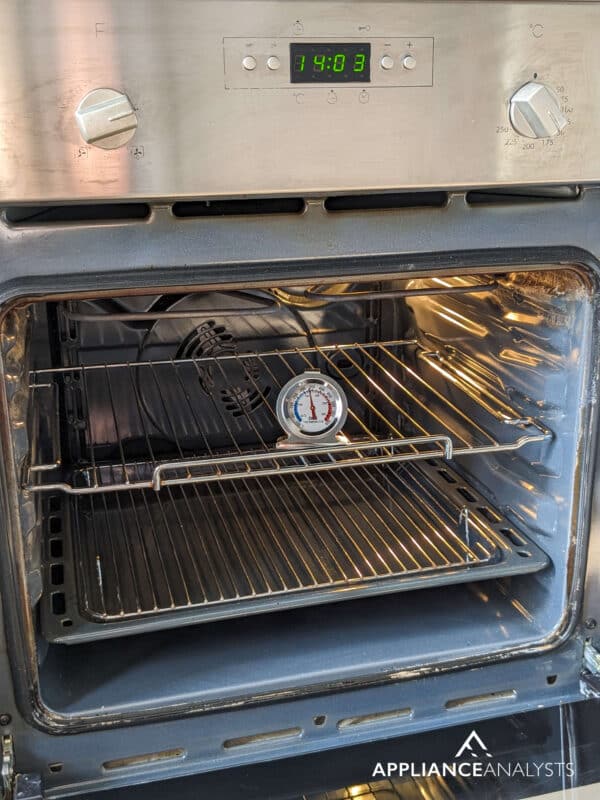
After calibrating your oven’s temperature, wait for everything to cool down completely, and then repeat the test. If you did everything right, the thermometer should now be closer to the initial temperature you dialed in.
3. The Baking Element Is Failing
Most modern ovens have baking, convection, and broil elements. Each element takes care of a different function and cooking method.
When turned on, most ovens will cycle through the 3 elements to start preheating. However, if your oven temperature keeps changing, there’s a good chance that one or more of the elements is faulty – most commonly, it’s the baking element.
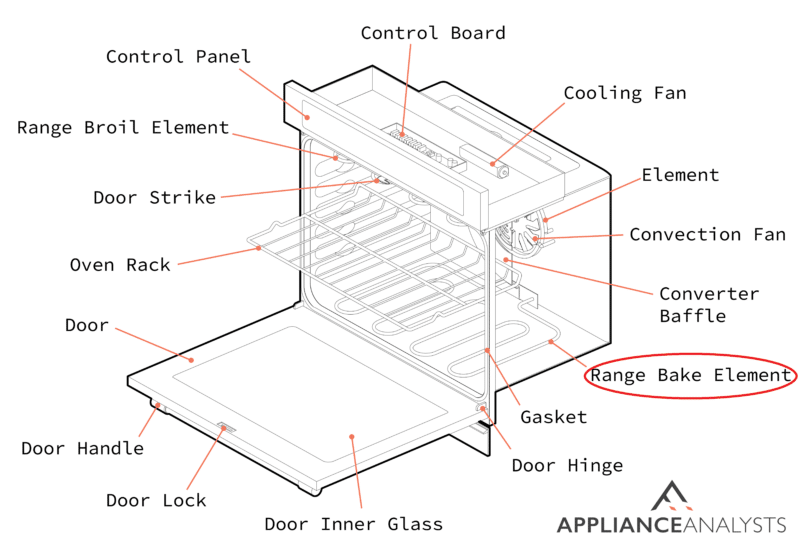
My usual advice when the baking element fails is to call a professional and have them closely examine the 3 elements to see how they’re working. Unless you know exactly what you’re doing, I wouldn’t recommend trying to check and replace the elements yourself.
4. The Thermostat Is Broken
If you have already inspected the heating element and your oven temperature keeps changing, the next culprit you should go after is the thermostat. The thermostat is the part of your oven that controls your oven’s internal temperature. The signs of a faulty thermostat are constantly burnt or undercooked food.
Your oven’s thermostat can fail for several reasons. One of those reasons is a lack of sufficient power due to a faulty oven switch or a broken cable.
Your thermostat could also fail due to a bad sensor probe, a short rod usually contained inside the oven tub. When the temperature rises too high, the sensor probe signals the thermostat to stop working, and if the temperature goes too low, the sensor rod stimulates the thermostat to start a heating cycle. My usual advice is to check the sensor rod to try and determine whether it needs repairs or replacement.
Please refer to your User Manual to find the steps to expose and safely check your oven’s sensor rod.
5. Faulty Electrical Connection
Assuming your oven temperature keeps changing, let’s move on to considering that a faulty electrical connection could be to blame. Chances are that the oven elements that draw electricity, such as power cables, plugs, and switches, are faulty.
Insufficient amounts of electricity will interfere with the normal operation of your oven, rendering it unable to maintain a constant temperature sufficient to cook food properly. It would be best to inspect the power cable to see whether it’s appropriately connected to the wall outlet.
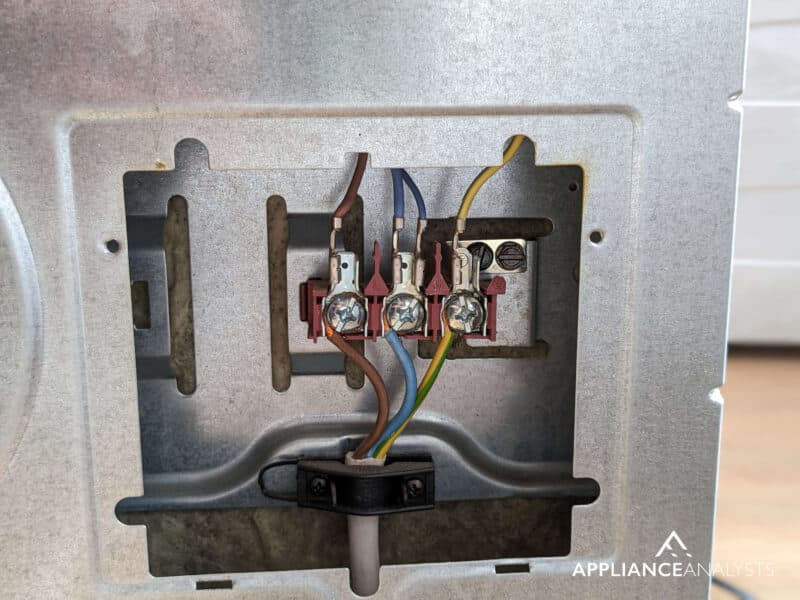
Disconnecting your oven is easier said than done since, in many cases, you’ll have to move the appliance to access the cable and the outlet behind it. If that’s the case, make sure to kill the power to your kitchen via your circuit breakers and turn off the oven’s gas supply. Then, get someone to help you move the oven.
Try plugging the oven into a different outlet and see if that does the trick. If not, no worries! Keep reading for more things to try.
6. Defective Temperature Sensor
Temperature sensors are known to fail, even in new kitchen appliances. A qualified oven technician will first test the temperature sensor before proceeding with other diagnostic steps. The temperature sensor tracks internal temperature changes and communicates with the main control board to adjust accordingly.
A faulty sensor will take inaccurate readings and send them to the central control body, making it impossible for your oven to keep a consistent temperature.
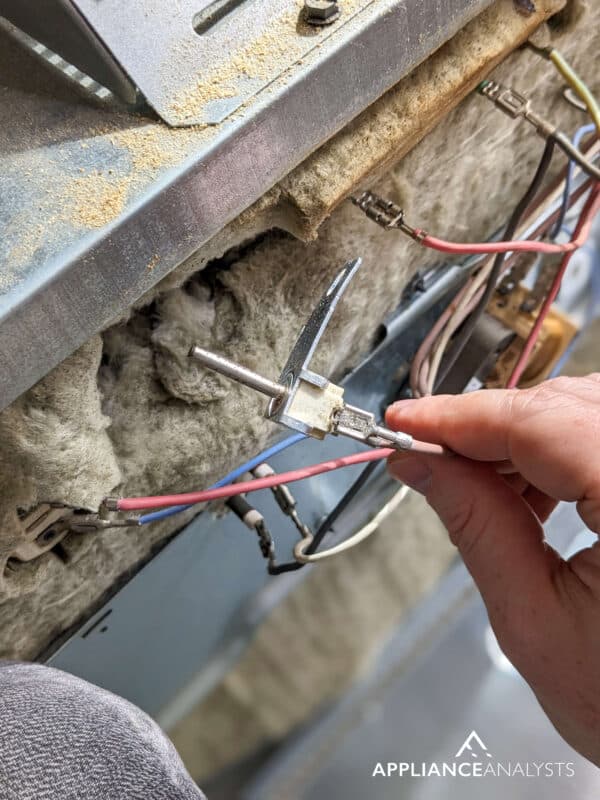
Depending on your model, the temperature sensor will be located in a different area than other brands and models. Please check your User Manual to find the sensor’s location. Remember to turn off the power supply to your kitchen via your circuit breakers, kill the gas supply to the oven and ensure the appliance is completely cool before doing anything.
The best way to determine whether a temperature sensor has gone bad is by using a multimeter and testing the part for continuity. If the sensor is ok, continuity should read “0” or close to “0”. Provided the number is higher, you’ll have to replace the sensor.
7. Oven Fan Breakdown
Another possible reason why your oven temperature keeps changing is that the oven fan has stopped working. An oven fan usually has two functions. The first function is to evenly spread the temperature everywhere so that your baked goods are cooked uniformly. The second function is cooling the oven to maintain the set temperature.
When the temperature sensor records an extremely high temperature, it sends the readings to the control board, which triggers the fan to start working to cool down the internal temperature of an oven up to the set maximum.
One of the most obvious signs of a faulty oven fan is unevenly cooked food.
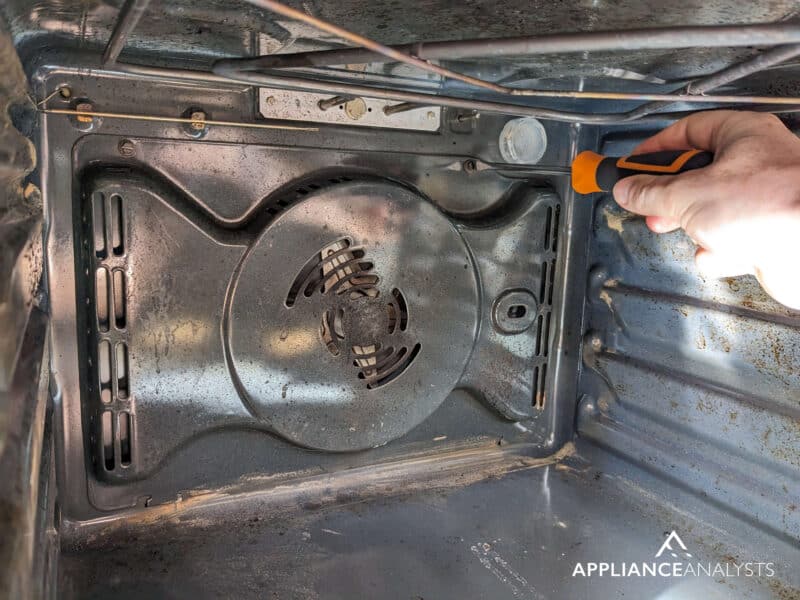
To check and replace the oven fan, first, turn off the power supply to your kitchen via your circuit breakers, kill the gas supply to the oven, and ensure the appliance is completely cool before doing anything. Find the fan and push the blades with your hands to see whether the motor is working properly. Also, look out for loose or broken fan blades. You can replace a broken fan as a DIY project.
If you want to get any replacement part – or see how much one would cost – click to enter your model number in the search bar below. Our partners at AppliancePartsPros stock almost every part with free guides on how to install them.

8. Blocked Air Vents for Gas Ovens
Unlike their electric counterparts, gas ovens feature air vents that help with hot air’s smooth flow and even flow inside the appliance. If your oven temperature keeps changing, chances are its vents are blocked. Some people pack lots of dishes into their ovens at the same time, which may block the air vents, effectively altering even the movement of hot air across the oven.
The easiest way to address blocked vents is to avoid overloading your oven and check where the vents are before putting any food next to them that could get in the way of proper airflow.
9. Faulty Convection Motor
A faulty convection motor could also explain why your oven temperature keeps changing. The convection motor is responsible for the consistent circulation of heated air inside the oven to ensure that your food cooks evenly by eliminating cool and hot zones. If the convection motor is broken or not functioning correctly, some areas inside the oven will be cooler or hotter than others.
Convection motors are some of the most durable parts of an oven, and it’s rare to find cases where they fail. However, age and wear can take their toll even on the most resilient elements of an oven, and the convection motor may be running too slowly to be effective.
To address the problem, you can fix the motor by servicing it or replacing it with a new one if it is completely broken. My usual advice is to let a certified technician do the job.
10. The Oven Board Is Failing
The last possible reason why your oven temperature keeps changing is a faulty control board.
You can think of your oven’s control board as a person’s brain. The board tells the oven how long to cook, what the temperature should be, how fast it should spin the fans, and much more.
Naturally, when the control board fails in any way, your oven might surprise you with sudden temperature changes and other quirks that’ll get in the way of your baking.
Replacing a control board is not simple, as it requires wiring and electrical knowledge, so it’s best to leave the job to a professional.
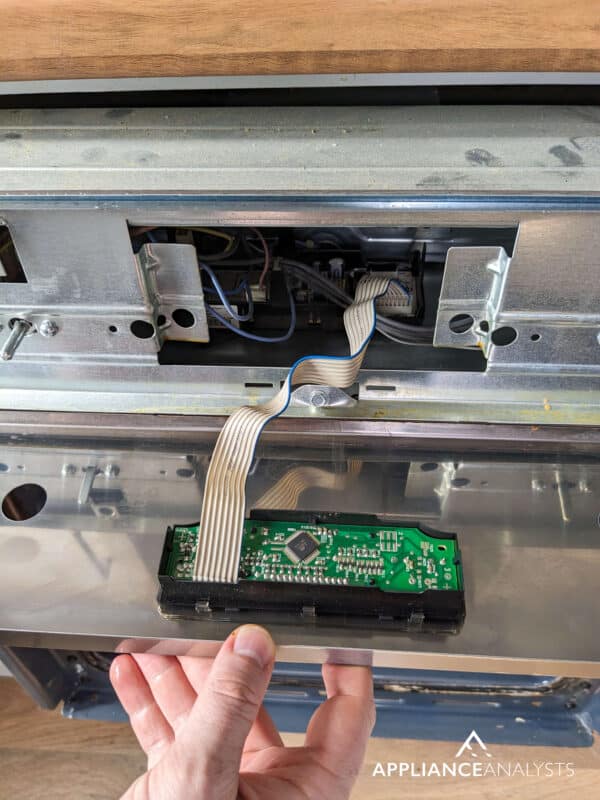
Conclusion
That about covers it!
When your oven temperature keeps changing, something as simple as baking a nice, home-cooked meal can become an annoying challenge.
Luckily, as I hope this piece has helped you better understand, in many cases addressing the most common causes behind oven temperature regulation issues is simple and quick. More often than not, using an oven thermometer to measure your oven’s calibration and double-checking your power sources should do the trick.
Thank you very much for sticking with me all the way to the end. If this article was helpful and interesting, please check out our other incredible resources below and consider subscribing to our newsletter.
Happy baking!
-Craig.







